It is always a pleasure to watch wild creatures going confidently about their business without fear.
Some creatures and birds in our garden are surprisingly self-assured. Recently, when we were having coffee on our back deck, this young Laughing Dove in a nearby tree surprised us as it confidently preened, stretched, practiced walking up and down a branch, turning about and giving the impression it was dancing. Every so often it would pause and give us a penetrating look, as if gauging if it had our attention.

I wondered why such a young bird would be so composed around people. Perhaps its parents had raised it under our noses, while we were blithely unaware. In contrast to us, the young dove would have been super-aware and observant, and so we would likely be familiar and seemingly judged to be nonthreatening. How else to explain the young birds confident display in our presence?

A resident pair of Laughing Doves spends a lot of time in our garden and they have become increasingly tame. They no longer fly off at the slightest movement from us, as they spend time feeding on the lawn or sunning themselves even while we are watching. Perhaps these are the parents of this young dove?

Pigeons and doves are monogamous and both parents share in incubating the eggs and in feeding and raising their young after the eggs have hatched. All pigeons and doves produce crop milk (also known as pigeon milk) and feed the nestlings on this until they are weaned at about 10 days old.
Both parents begin producing crop milk about two days before the eggs hatch. The crop milk is a curd-like substance formed in fat-filled cells lining the crop. It is rich in protein and fats and also contains minerals and antibodies. Crop milk is essential to nestlings’ survival and development. The milk is fed to the babies by regurgitation.
Baby Laughing Doves are fed exclusively on crop milk for the first three days of their lives, and then the parents gradually add small seeds to this diet. Flamingos and Emperor Penguins are the only species of bird other than pigeons and doves that produce crop milk.

As we watched, the young Laughing Dove practiced walking up and down the branch, twirling at each turnaround like a dancer

Sometimes it would take a brief rest, tucking its legs under itself, and regarding us intently. Here is a series of photos recording its “dance”, interspersed with it pausing to look at us, almost as if to check that we are paying attention
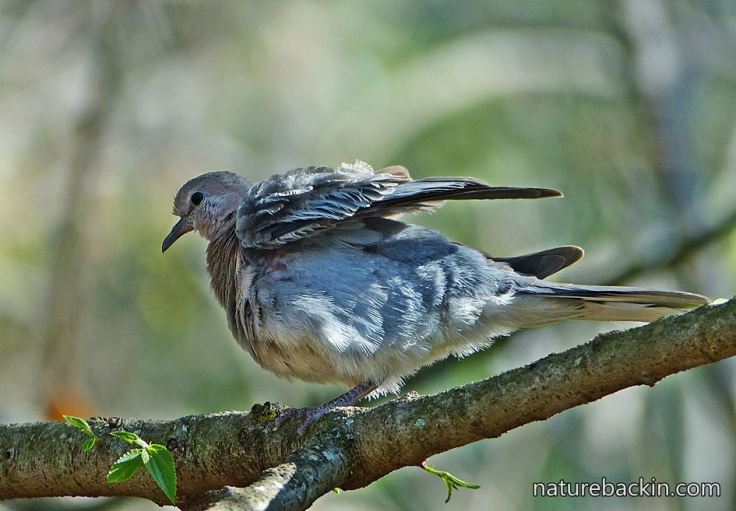



No its not singing, just pausing once again to check us out

I think this pose is reminiscent of Anna Pavlova
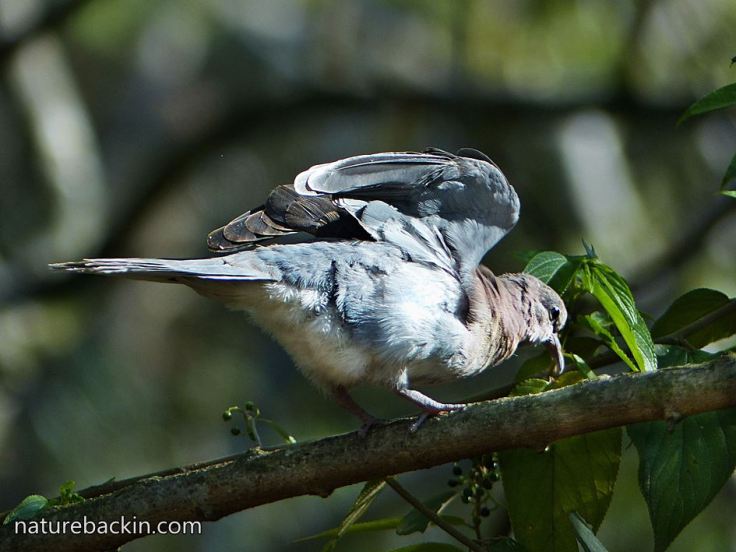
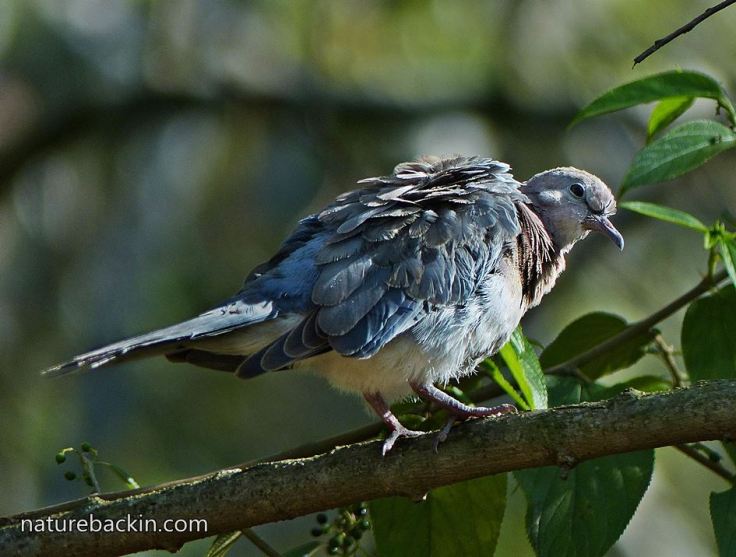
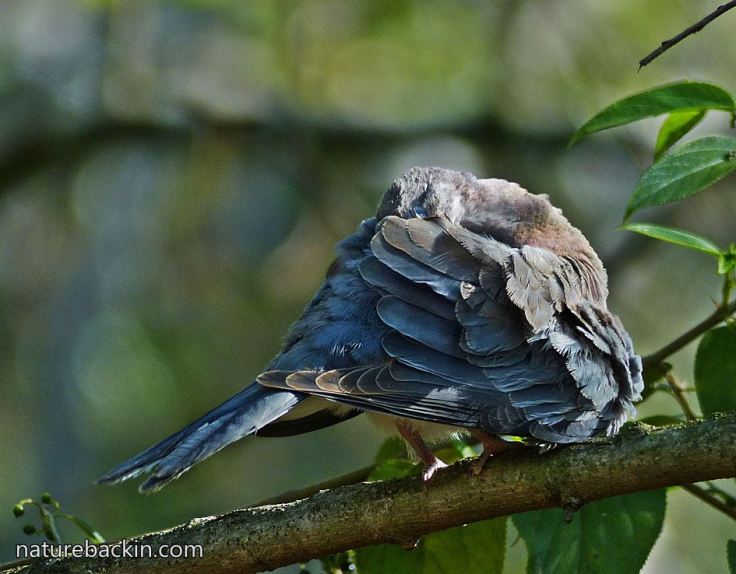

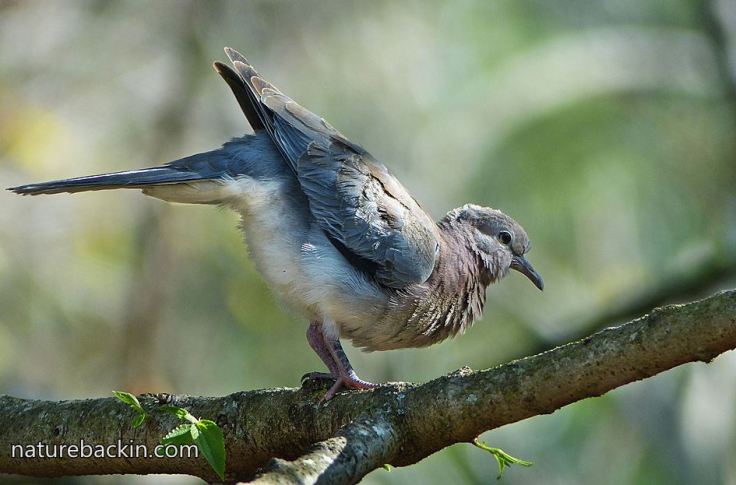
Taking a final bow
Sources:
Paul R. Ehrlich, David S. Dobkin, and Darryl Wheye. 1988. Bird Milk. https://web.stanford.edu/group/stanfordbirds/text/essays/Bird_Milk.html
Science Alert. 2011. How pigeons produce ‘milk’. http://www.sciencealert.com/news/20111909-22630.html
Posted by Carol








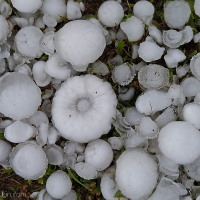
August 18, 2017 at 9:10 pm
Wow! What a stunning photo!!
LikeLiked by 1 person
August 19, 2017 at 6:16 am
Thanks Roda.
LikeLiked by 1 person
August 18, 2017 at 4:10 pm
It must like the attention! My niece loves pigeons and insisted we stop to visit them at every park in London when we traveled together. We have mourning doves here, who occasionally squat on our deck but never stick around when they spot us. Unfortunately, they seem to draw the attention of hawks rather easily.
LikeLike
August 19, 2017 at 6:15 am
It seemed to like the attention, which was strange. Doves are easy prey it seems despite being so swift when in flight.
LikeLike
August 22, 2017 at 1:03 am
Poor things…the mourning doves spend so much time on the ground…that and being slightly larger targets seems to be attractive to predators. The trees are much safer, as your bird seems to realize!
LikeLiked by 1 person
August 22, 2017 at 7:46 am
Yes they are vulnerable when on the ground. The doves here too often forage on open ground. When we used to have sparrowhawks nesting nearby, they would catch doves on the wing, sometimes flushing them out first so as to get them to fly.
LikeLike
August 18, 2017 at 10:12 am
I want to call the dove ‘Pavlova’ … you are right that he or she resembles a ballerina in her tutu. Your pictures are absolutely magnificent and I found the prose fascinating (and beautifully written) too. What fascinating creatures we live amongst and there is something rather wonderful about being allowed to co-exist with them. Your doves are taming and I like to believe it is a certainty that this youngster is of your pair and has simply imbibed the fact that you are not harmful.
LikeLiked by 1 person
August 18, 2017 at 10:44 am
Thanks Osyth and I love your comment. There is indeed something wonderful about being allowed to co-exist with wild creatures.
Btw, I am desperately trying to catch up on blog reading and I hope to visit your blog later today. Problem is that I have work that constantly intervenes!
LikeLiked by 1 person
August 18, 2017 at 12:45 pm
Pah! Please don’t apologise for life getting in the way of reading my drivel! Whenever you visit it is a pleasure to see you … I am fortunate to be mistress of all I survey (!) and as such can find time to read blogs most days – it’s a welcome relief from battling with the official writing. I’m very happy that you liked my comment – they are words from the heart 😊
LikeLiked by 1 person
August 19, 2017 at 6:09 am
Shew! It is far from drivel! The latest obstacle to my catching up is that my Internet connection has become so sloooow …
LikeLiked by 1 person
August 19, 2017 at 9:56 am
Is there anything more irritating than snailternet! Bon courage …
LikeLiked by 1 person
August 19, 2017 at 10:27 am
Merci beaucoup. (I have exhausted just about my entire French vocabulary by the way :))
LikeLiked by 1 person
August 20, 2017 at 9:36 am
😂 🇫🇷 😂
LikeLiked by 1 person
August 18, 2017 at 7:28 am
Thanks Anne. How nice to get so many doves in your garden! We have a resident pair and only a few other individuals visit too. Laughing Doves are among my most favourite birds.
LikeLike
August 18, 2017 at 7:26 am
How do you get such remarkable photos? These really are wonderful. How lucky to share your garden with such charming creatures.
LikeLiked by 1 person
August 18, 2017 at 7:47 am
We are indeed fortunate to have charming visitors to our garden and who tolerate my presence. A human visitor once said that he thought that animals and birds recognise our place as a safe haven, which was a lovely thing to say. If true, perhaps that explains why many of them seem to be so relaxed?
LikeLiked by 1 person
August 18, 2017 at 5:59 am
I love this series of pictures! We get large flocks of Laughing Doves in our garden and I never tire of watching their antics.
LikeLiked by 1 person
August 18, 2017 at 7:42 am
My reply to you didn’t thread! So irritating! Wonder if this one will?
LikeLike
August 18, 2017 at 1:48 am
Just look at him go! I wonder which song is stuck in his head? 😀
LikeLiked by 1 person
August 18, 2017 at 7:25 am
Yes, I wonder too 🙂 (After I first looked at the photos I found I had David Bowie’s “John, I’m only dancing” stuck in my head, although I doubt the dove would like it!)
LikeLiked by 1 person
August 19, 2017 at 1:28 am
Perhaps the two of you were tuned into the same station!
LikeLiked by 1 person
August 19, 2017 at 6:10 am
😊
LikeLike
August 17, 2017 at 9:15 pm
The first shot is superb. The light is marvelous and you have captured the bird perfectly.
Worthy of a frame.
LikeLiked by 1 person
August 18, 2017 at 7:21 am
Thanks so much Ark. The high-contrast light was quite tricky but this one worked out ok. I like the way fanned tail resembles a ballet tutu 🙂
LikeLiked by 1 person
August 17, 2017 at 8:18 pm
Excellent photos, Carol. Curious behavior, as if he was showing off just for you!
LikeLiked by 1 person
August 17, 2017 at 9:05 pm
Yes it is strange. Hard to believe it was showing off for us, but that is what it looked like ☺
LikeLiked by 1 person